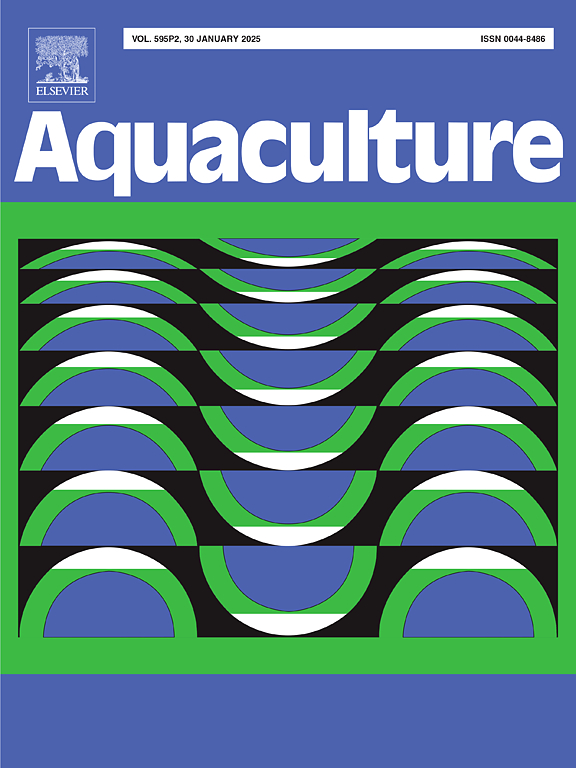Dietary Egyptian mallow attenuates metiram-evoked neuro-ethological, endoplasmic reticulum stress genes, and biochemical/histopathological disruptions in Oreochromis niloticus
IF 3.9
1区 农林科学
Q1 FISHERIES
引用次数: 0
Abstract
The improper application of pesticides including fungicides generates serious biological risks that may compromise aquatic biota and inhibit sustainable aquaculture. Consequently, this pioneering attempt looked at the ability of the leaves of Malva parviflora (Egyptian mallow) powder (MPP) to counteract various toxicological consequences in Oreochromis niloticus (Nile tilapia) caused by metiram (MEM) exposure. The investigation encompassed neuro-ethology, stress biomarkers, gene expression associated with endoplasmic reticulum (ER) stress, and histopathology assays of gill and brain tissues. Accordingly, fish (32.80 ± 0.92 g body weight; n = 200) were haphazardly assigned into four groups in five replicates for nine weeks (control, MPP, MEM, and MPP + MEM). The nominal concentration of MEM was 0.377 mg/L (1/10 of 96 h-lethal concentration 50). Dietary MPP level was included at 15 g/kg diet concentration. The outcomes revealed lower fish survivability (68.00 %) and significant (P < 0.05) various behavioral changes (declining in foraging, swimming, aggressive and line crossing, and increasing in surfacing, resting, and abnormal movement) by chronic MEM exposure. The neuro-stress biomarkers were significantly (P < 0.001) altered by MEM exposure, where 8-hydroxy-2′-deoxyguanosine, glucose, and cortisol increased with no marked change in acetylcholine esterase activity. In addition, the MEM exposure induced a prolonged ER stress which was proven by significant (P < 0.001) up-regulation of Jun-N-terminal kinase, C/EBP homologous protein, and extracellular signal-regulated kinase-1 genes of gills and mechanistic target of rapamycin kinase, protein kinase RNA-like ER kinase, activating transcription factor 6, and binding immunoglobulin protein genes of brain. Histologically, it considerably generated a wide variety of changes in gills (detachment, inflammatory cell infiltration, and congestion) and brain (vacuolation, degeneration, and marked aggregation of glial cells). Interestingly, the dietary intervention of MPP significantly (P < 0.05) streamlined these variables by nearly renovating to control levels while preserving the histological integrity of the gills and brain tissues. The outputs of this perspective suggest the dietary intervention of MPP to safeguard against MEM toxicity in O. niloticus for sustaining aquaculture.
求助全文
约1分钟内获得全文
求助全文
来源期刊

Aquaculture
农林科学-海洋与淡水生物学
CiteScore
8.60
自引率
17.80%
发文量
1246
审稿时长
56 days
期刊介绍:
Aquaculture is an international journal for the exploration, improvement and management of all freshwater and marine food resources. It publishes novel and innovative research of world-wide interest on farming of aquatic organisms, which includes finfish, mollusks, crustaceans and aquatic plants for human consumption. Research on ornamentals is not a focus of the Journal. Aquaculture only publishes papers with a clear relevance to improving aquaculture practices or a potential application.
 求助内容:
求助内容: 应助结果提醒方式:
应助结果提醒方式:


